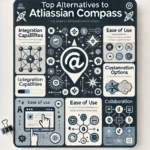AI in Retail:
The retail industry is undergoing a transformation, driven by the adoption of Artificial Intelligence (AI) and Machine Learning (ML). These technologies are not just buzzwords; they are powerful tools that are reshaping the way retailers understand and interact with their customers. From personalized recommendations to inventory management, AI and ML are enhancing customer experience in ways that were once unimaginable. In this post, we’ll explore how retailers are leveraging AI and ML to create more personalized, efficient, and satisfying shopping experiences for their customers.
1. Personalized Shopping Experiences
One of the most impactful applications of AI and ML in retail is the ability to offer personalized shopping experiences. By analyzing customer data, such as browsing history, purchase patterns, and even social media activity, retailers can deliver highly personalized recommendations and promotions.
Practical Example:
- Amazon’s Recommendation Engine: Amazon is a pioneer in using AI and ML to personalize customer experiences. Its recommendation engine analyzes customer behavior to suggest products that are highly relevant to individual users. This not only enhances the shopping experience but also significantly boosts sales.
2. Optimized Pricing Strategies
AI-driven dynamic pricing models allow retailers to adjust prices in real-time based on demand, competition, and other factors. This ensures that prices are competitive and aligned with customer expectations, ultimately driving sales while maximizing profit margins.
Practical Example:
- Walmart’s Dynamic Pricing: Walmart uses machine learning algorithms to monitor competitors’ prices and adjust its own pricing strategies in real-time. This ensures that Walmart remains competitive while also offering the best prices to its customers.
3. Improved Inventory Management
Managing inventory effectively is crucial for retail success. AI and ML can predict demand trends, helping retailers maintain optimal stock levels. This reduces the chances of overstocking or stockouts, ensuring that customers find what they need when they need it.
Practical Example:
- Zara’s Inventory Optimization: Zara employs AI to analyze sales data and predict trends, allowing them to adjust inventory levels and distribution in real-time. This ensures that the latest fashions are always available in the right quantities, reducing waste and improving customer satisfaction.
4. Enhanced Customer Support
AI-powered chatbots and virtual assistants are becoming commonplace in retail, providing customers with instant support and assistance. These tools can handle a wide range of customer inquiries, from answering product questions to helping with returns, all while maintaining a high level of customer satisfaction.
Practical Example:
- H&M’s Virtual Assistant: H&M uses a virtual assistant powered by AI to help customers with their shopping experience. The assistant can answer questions about products, help customers find items, and even suggest outfits, all in real-time.
5. Streamlined Supply Chain Management
AI and ML are also transforming supply chain management in retail. By analyzing data from across the supply chain, AI can predict potential disruptions and optimize logistics. This leads to faster delivery times and ensures that products are always available when customers want them.
Practical Example:
- Target’s Supply Chain Optimization: Target uses machine learning algorithms to optimize its supply chain, predicting demand and managing logistics more effectively. This has resulted in improved stock availability and faster delivery times for customers.
6. Visual Search and Augmented Reality
AI-powered visual search and augmented reality (AR) are enhancing the shopping experience by allowing customers to find products more easily and visualize how they would look in real life. This is particularly useful in fashion and home décor, where seeing is believing.
Practical Example:
- Sephora’s Virtual Artist: Sephora’s Virtual Artist uses AR and AI to allow customers to virtually try on makeup before purchasing. This not only enhances the shopping experience but also helps reduce returns.
7. Fraud Detection and Prevention
AI and ML play a crucial role in detecting and preventing fraud in retail. By analyzing transaction data in real-time, these technologies can identify unusual patterns and flag potentially fraudulent activities, protecting both the retailer and the customer.
Practical Example:
- Best Buy’s Fraud Prevention: Best Buy uses AI-driven systems to monitor transactions and detect fraudulent activities. This system helps protect customers’ financial information and reduces the risk of chargebacks for the retailer.
The Future of AI in Retail
As AI and ML technologies continue to evolve, their applications in retail will only expand. Retailers that effectively integrate these technologies into their operations will not only enhance customer experiences but also gain a competitive edge in an increasingly digital marketplace.
Conclusion
AI and ML are no longer just futuristic concepts; they are here, and they are transforming the retail industry. From personalized shopping experiences to optimized inventory management, these technologies are helping retailers better understand and serve their customers. As these technologies continue to develop, we can expect even more innovative applications that will further enhance the retail experience.
For retailers, the message is clear: Embrace AI and ML now to stay ahead of the competition and meet the evolving expectations of your customers.





